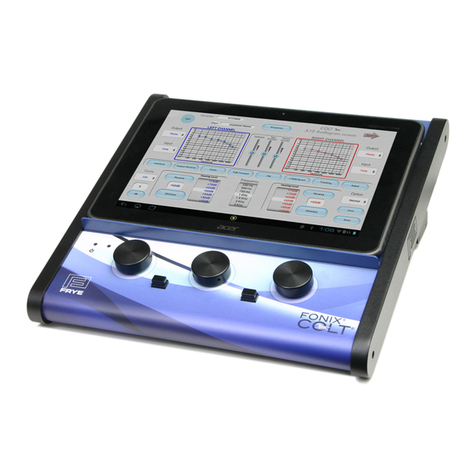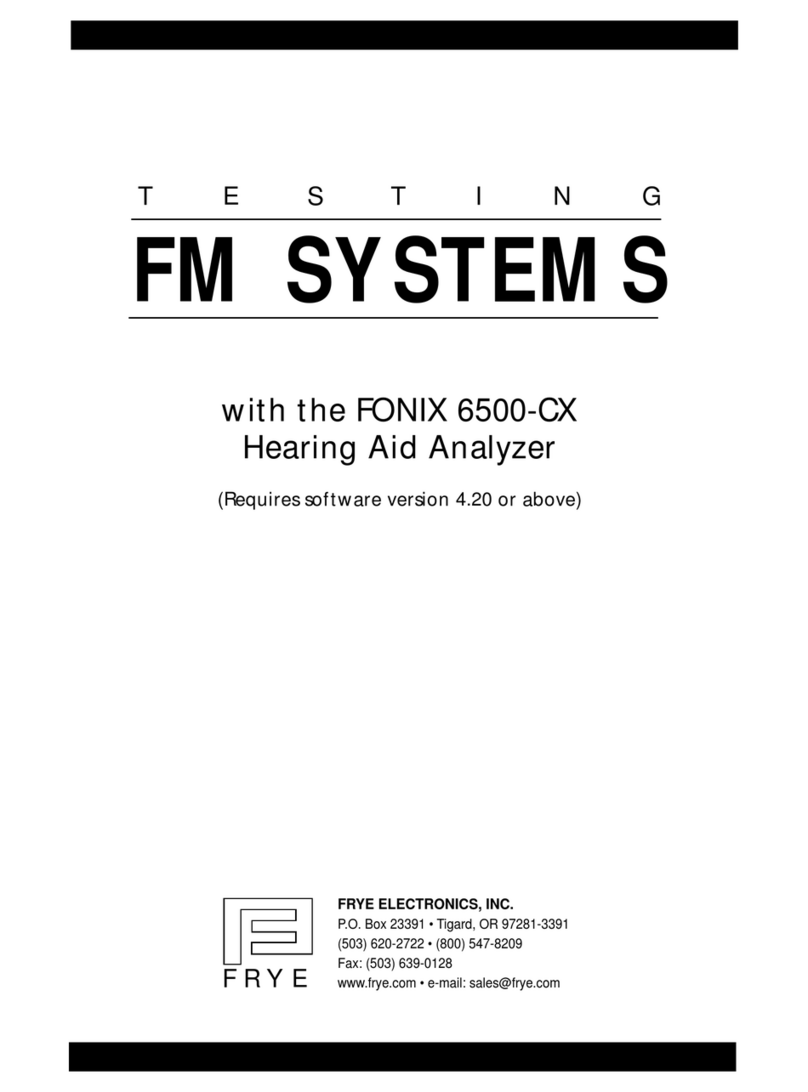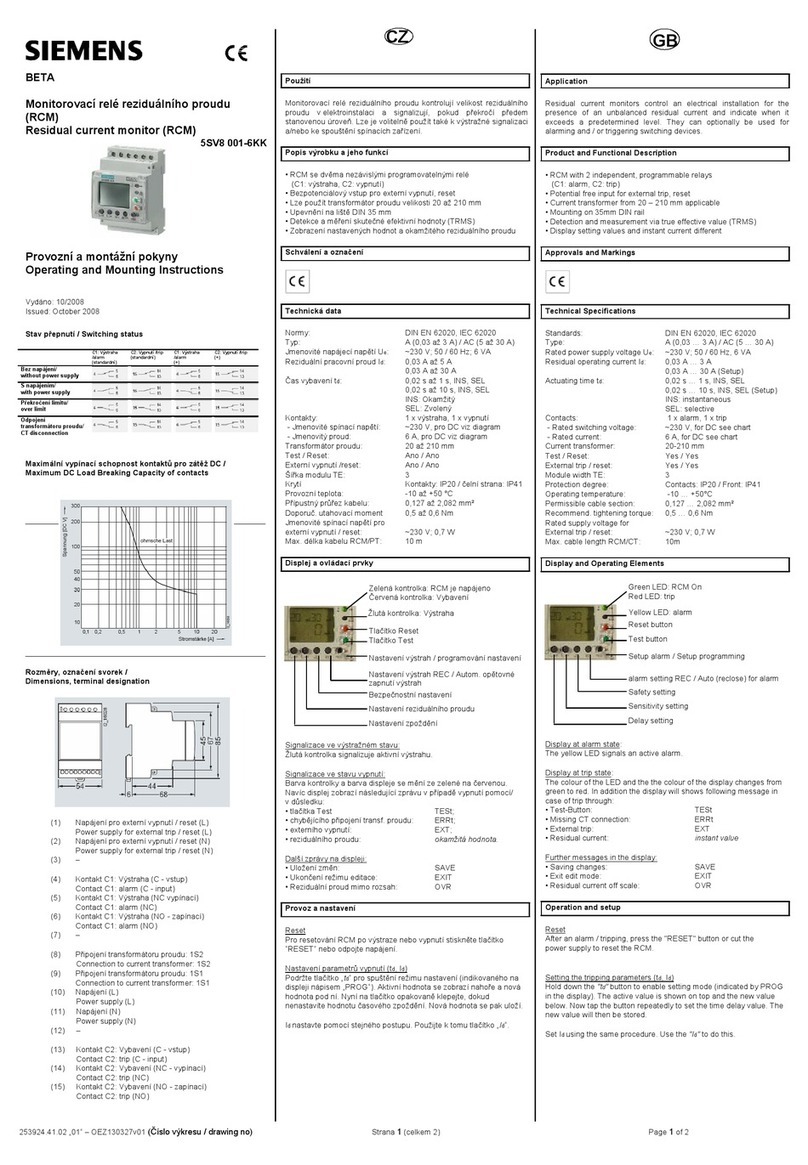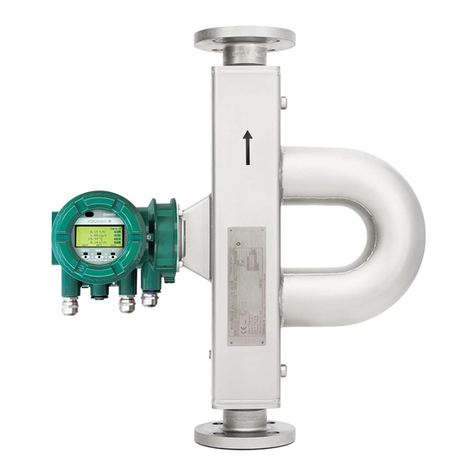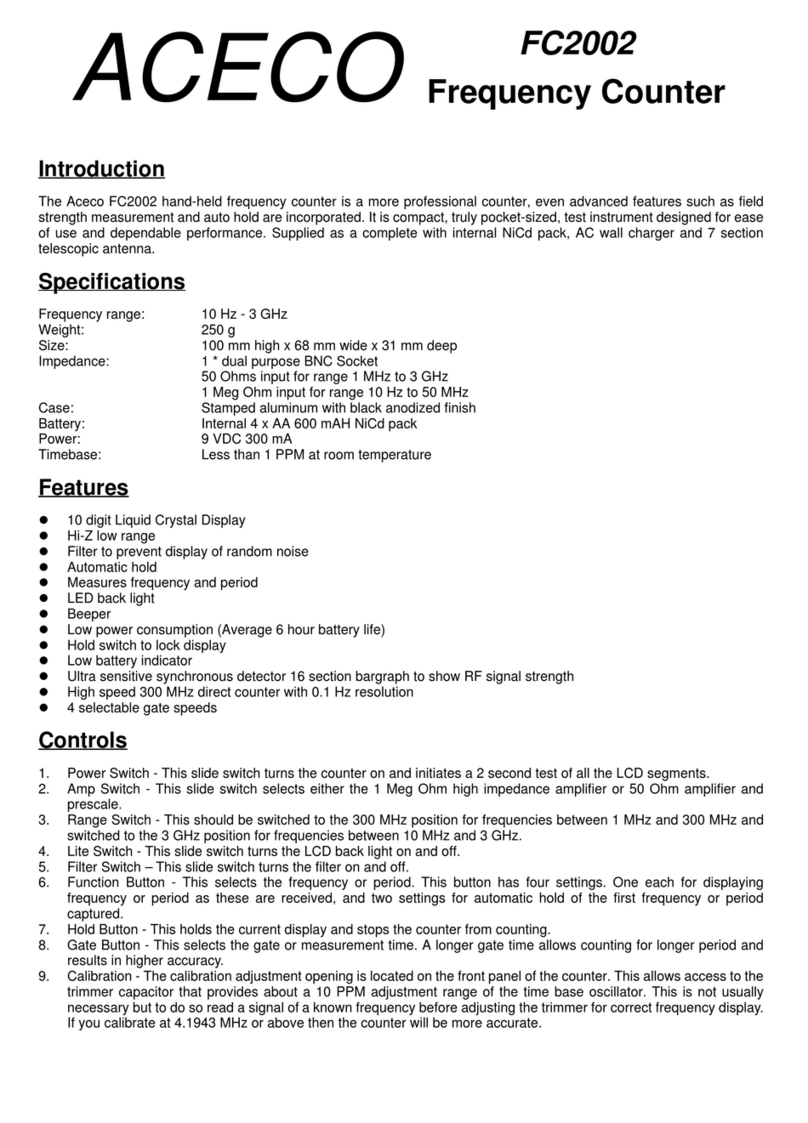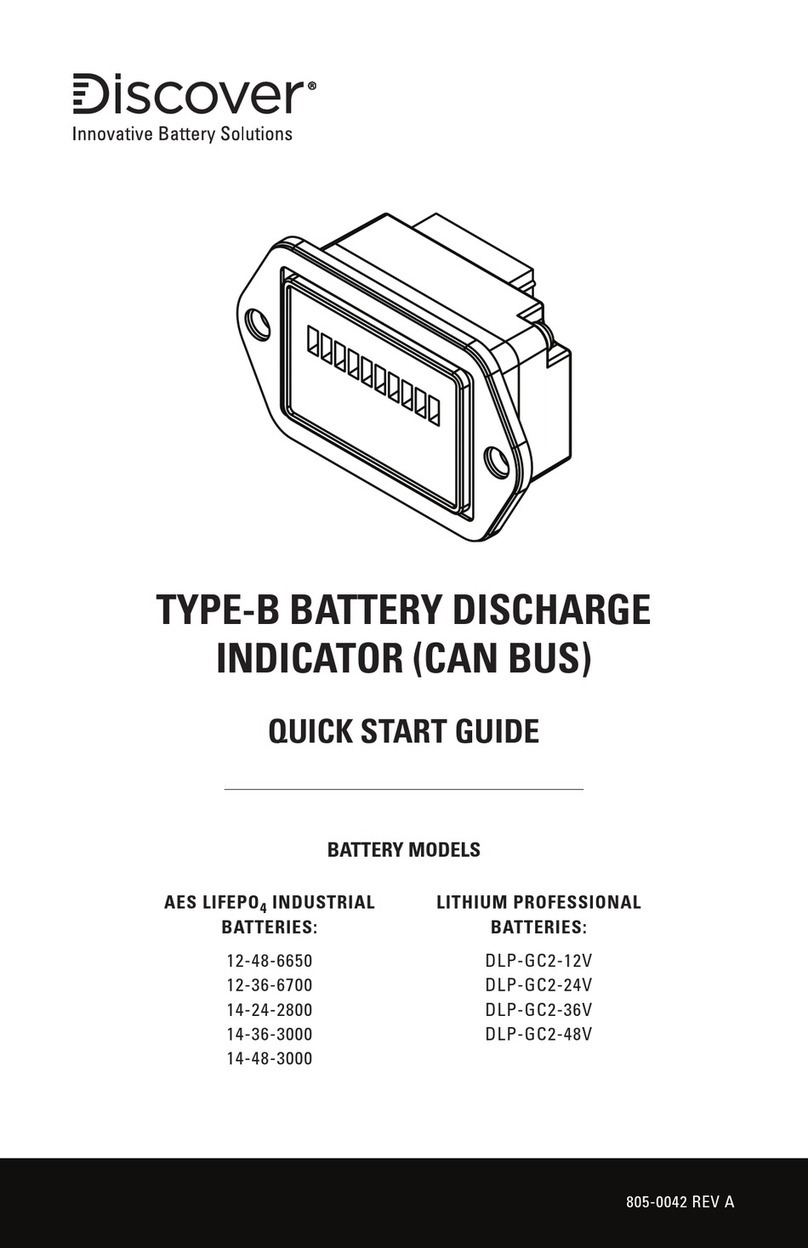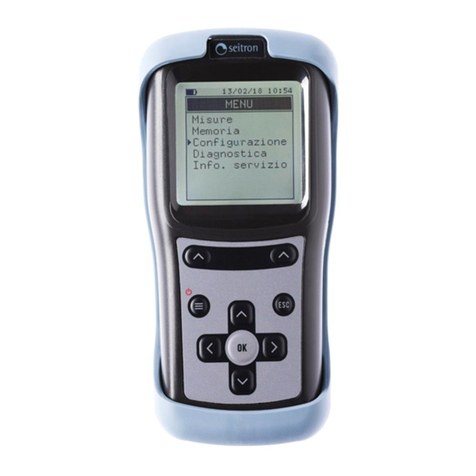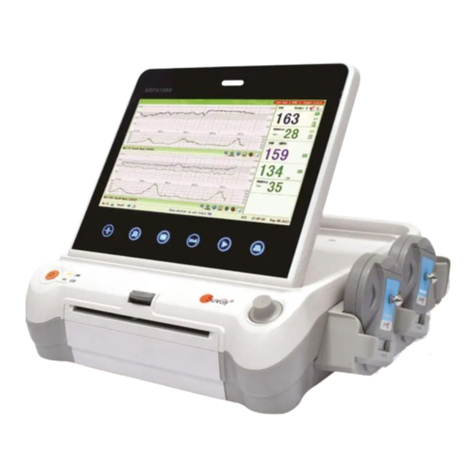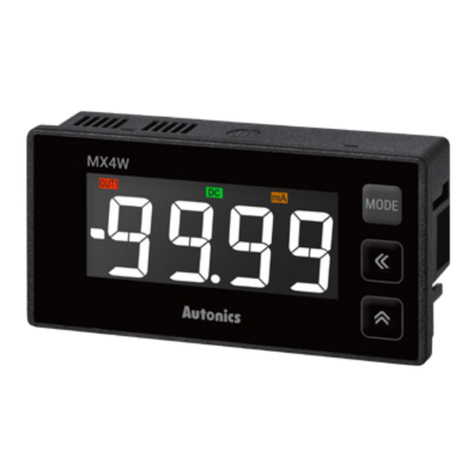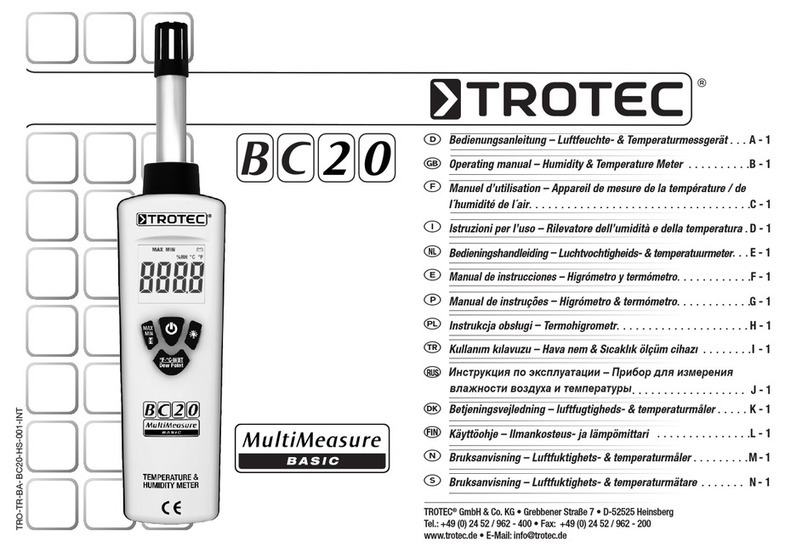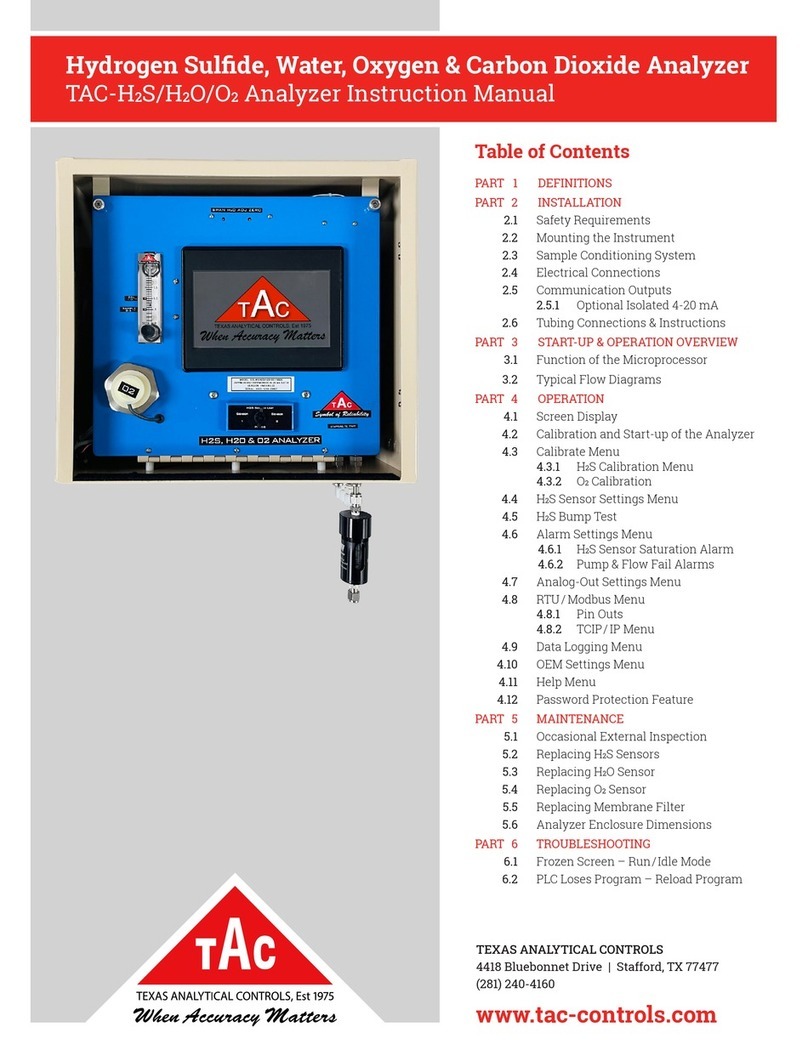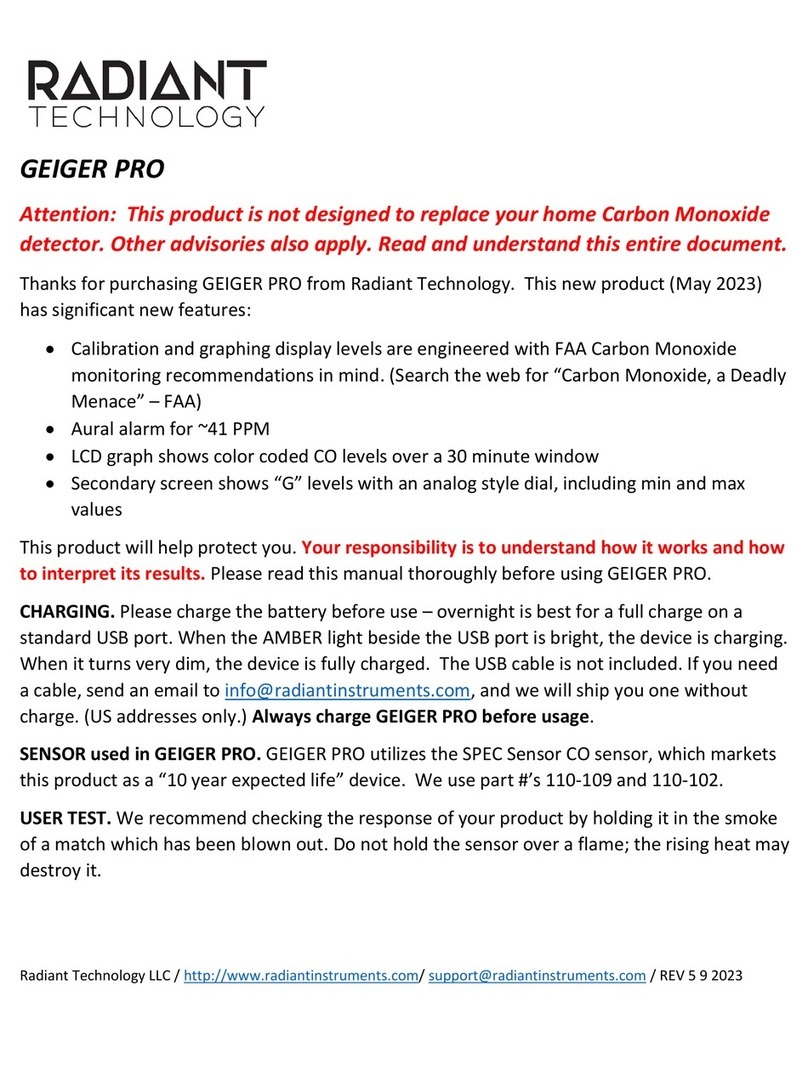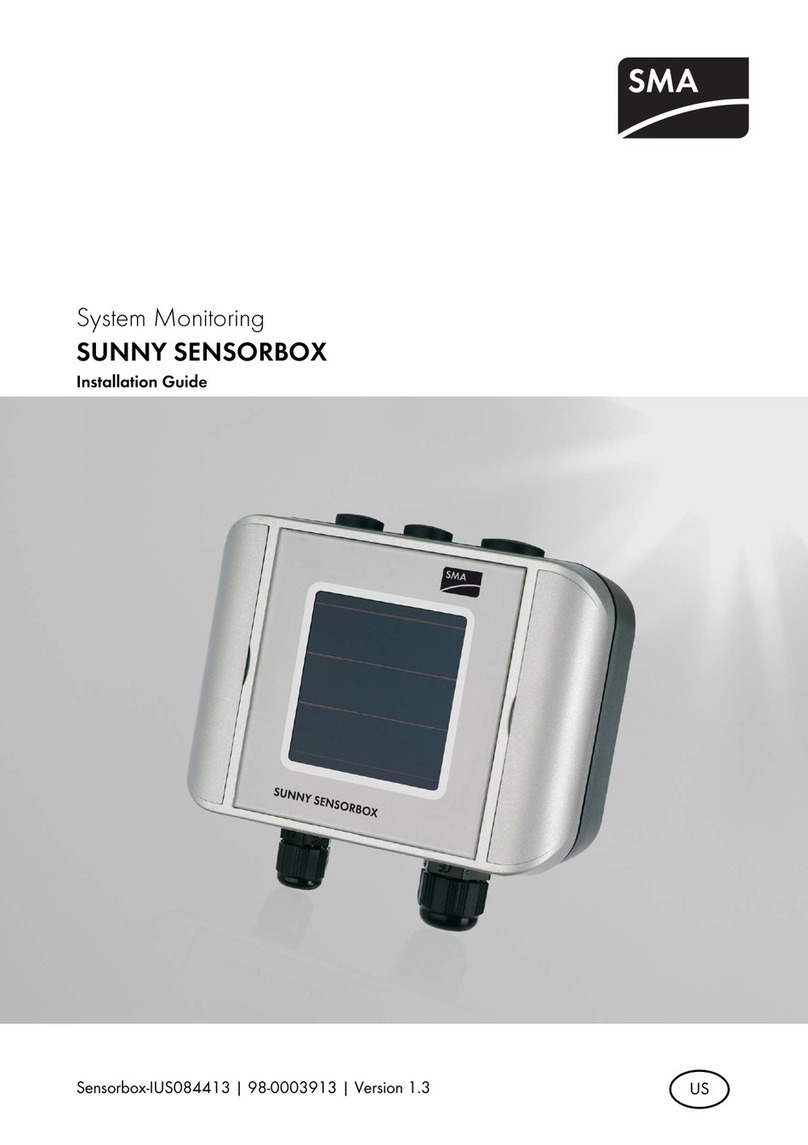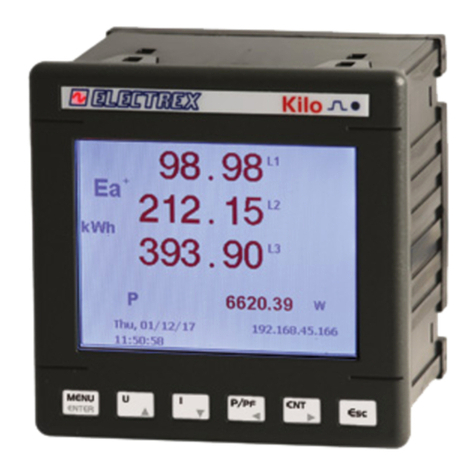Frye FONIX Hearing Evaluator FA-10 User manual

FONIX®FA-10
Hearing Evaluator™
Digital Audiometer
Operator’s Manual
version 1.22
© 2010, Frye Electronics, Inc.
All Rights Reserved 6/09
Revised 06/18/10


Note on this Manual
We have organized this manual on the assumption that the
user is already trained in how to do hearing tests. However,
should that not be the case, or if the operator needs some help,
Chapter Six, "Hearing Tests," may be consulted. Section 4.5
describes special tests that can be performed on the FA-10.
These are not included as standard functions, but can be added
for an additional charge.


Table of Contents
Chapter 1: Introduction.........................................1
1.1 Description ........................................................1
1.2 Audiometer Type...................................................1
1.3 Error Detection ....................................................1
1.4 Service............................................................1
1.5 Safety.............................................................2
1.6 Cleaning the FA-10 .................................................4
1.7 Standard Accessories ...............................................5
1.8 Optional Accessories................................................6
Chapter 2: Specications........................................9
Chapter 3: Setting Up the Audiometer ..........................15
3.1 Rear Panel Connections ............................................15
3.2 Rear Panel “See Manual” Symbols ..................................16
3.3 Audiometer Self Test...............................................16
Chapter 4: Operation ..........................................17
4.1 Input Selections ...................................................17
4.2 Output (Both Left and Right Channel) ...............................19
4.3 Presenting the Signal ..............................................20
4.3.1 Hearing Level Selection .....................................20
4.3.2 Frequency Selection .........................................20
4.3.3 Stimulus button ............................................20
4.3.4 Reverse button .............................................21
4.3.5 -2.5 dB button ..............................................21
4.3.6 Digital VU Meters ..........................................21
4.4 Miscellaneous Controls and Indicators ...............................21
4.4.1 Output Reverse .............................................22
4.4.2 Pulsed ....................................................22
4.4.3 Warble.....................................................22
4.4.4 Talk Forward ...............................................22
4.4.5 Mic (Control) ...............................................22
4.4.6 External (Control) ..........................................23
4.4.7 Talk Back (Control)..........................................23
4.4.8 Stereo Monitor (Control) . . . . . . . . . . . . . . . . . . . . . . . . . . . . . . . . . . . . .23
4.4.9 Patient Response ...........................................23
4.4.10 Power ....................................................23
4.5 Special Tests . . . . . . . . . . . . . . . . . . . . . . . . . . . . . . . . . . . . . . . . . . . . . . . . . . . . . .23

4.6 RS232 Option .....................................................28
4.7 Dual Calibration Option............................................29
4.8 Connecting an iPod to the Audiometer ...............................29
4.9 Using the FA-10 with a CD player or iPod ............................31
Chapter 5: Using the FA-10 to Help Select a Hearing Aid .........37
5.1 Quick Reference Guide to Using the Hearing Aid Simulator ............37
5.2 Complete Instructions for Using the Hearing Aid Simulator.............39
5.2.1 Selecting Gain and Frequency Response........................39
5.2.2 Selecting Maximum Output (SSPL 90) .........................42
Chapter 6: Hearing Tests with the Hearing Evaluator .............45
6.1 Preparing to Test ..................................................45
6.2 The Speech Reception Threshold (SRT)...............................45
6.3 Puretone Audiometry..............................................47
6.3.1 Air-Conduction Tests . . . . . . . . . . . . . . . . . . . . . . . . . . . . . . . . . . . . . . . .47
6.3.2 Bone-Conduction Tests ......................................48
6.4 Supra-Threshold (above threshold) Tests .............................51
6.4.1 The Most Comfortable Level (MCL) for Speech .................51
6.4.2 The Uncomfortable Level (UCL) for Speech.....................52
6.4.3 The Speech Discrimination Score (SDS) ........................52
6.5 Setting the Masking Levels for Thresholds ............................53
6.5.1 The Plateau Procedure .......................................54
6.5.2 The One-Level Method ......................................54
Appendix A: Operational Indicators & Error Messages............57
Appendix B: Accessories.......................................61
Appendix C: Spondee Words...................................65
Appendix D: Phonetically Balanced (PB) Words..................67
Appendix E: Technical Description of Masking ..................71
Appendix F: Sound Field Calibration Instructions................73
Appendix G: Bone Calibration Tables...........................79
Appendix H: Earphone Calibration Tables.......................81
Appendix I: Calibrating the FA-10 ..............................83

Frye Electronics FONIX FA-10 Hearing Evaluator 1
Chapter 1: Introduction
1.1 Description
The FONIX FA-10 Hearing Evaluator is a digital audiometer with a built-in hearing aid simu-
lator designed especially for hearing instrument dispensers. The unit includes air, bone, and
speech audiometry as standard features. Also included in a standard unit are the Stenger test,
and talkover function. A complete monitoring feature is available when the monitor headset
or the boom microphone monitor headset is purchased.
The FA-10 is a basic, good quality, light weight, moderately priced audiometer with optional
sound eld testing and optional accessories, such as a soft carrying case, patient response
switch, external speech microphones, monitor headphone, and talkback microphone.
It is a microprocessor-based product with no internal mechanical calibration potentiometers.
Calibration is accomplished without opening the instrument case.
Programming options include an RS232 computer interface, Special Test Options, and a Dual
Calibration Option. Special tests are: SISI1, MLB2, and ABLB3. (See section 4.5 for special test
descriptions.)
1.2 Audiometer Type
The FA-10 meets the requirements of Type 3A audiometers.
The FA-10 conforms to ANSI S3.6–1996 and IEC 60645-1 1992 standards.
1.3 Error Detection
The Hearing Evaluator is designed to test itself and to indicate, to the operator or service
person, if an error exists and where it is located. Appendix A is a list of the possible error
conditions and the way that the instrument indicates these errors with ashing LEDs on the
front panel.
1.4 Service
Contact Frye Electronics, Inc., P.O. Box 22391, Tigard, Oregon 97281-3391, U.S.A.
Shipments to 9826 SW Tigard St., Tigard, Oregon 97223.
Telephone: 800/547-8209 in U.S. and Canada; 503/620-2722; Fax 503/639-0128; e-mail: ser-
1SISI – Short Increment Sensitivity Index
2MLB – Monaural Loudness Balance
3ABLB – Alternate Binaural Loudness Balance

2 Chapter 1: Introduction
1.5 Safety
Rear Panel Mains Fuses for 120 VAC use: 0.5A 250V slow 3AG.
Rear Panel Mains Fuses for 220V/240V use: two each 0.16A, 250V, type T.
For the FA-10 to comply with IEC 60601-1, all mains connected electrical equipment attached
to the FA-10 must also comply with IEC 60601-1. All computer and audio equipment attached
to the FA-10 must be medical grade or else used with a medical grade isolation transformer
Symbol Meaning
“Read the accompanying documents.” Please read this manual before
operating the FA-10. A separate maintenance manual also exists. If you
wish to obtain one, please contact Frye Electronics or your Frye repre-
sentative.
For purposes of safety classication under IEC 60601-1, the FA-10 is
class 1, type B, ordinary equipment suitable for continuous operation.
This Symbol indicates that Frye Elecctronics, Inc. is a Registered Firm
of British Standards Institution, and we conform to the ISO 13485
standard.
Keep dry. The FA10 should not be exposed to water or other uids.
The shipping/storage temperature of the FA-10 is -20 to 60 degrees
Celsius (-4 to 140 degrees Fahrenheit).
The shipping/storage humidity of the FA-10 is 5 to 95% relative hu-
midity (non-condensing).
This symbol on the insert earphone eartip packaging indicates that
eartips should be discarded after use in order to prevent the possible
spread of infection. They cannot be cleaned, sterilized, or reused.
95%

Frye Electronics FONIX FA-10 Hearing Evaluator 3
Safety Classication for IEC 60601-1
Type of protection against electric shock: Class I
Degree of protection against electric shock: Type B
Protection against harmful ingress of water: Ordinary
Mode of operation: Continuous
The FA-10 does not require sterilization or disinfection.
Warning: This equipment is not suitable for use in the presence of ammable anaesthetic
mixture with air or with oxygen or nitrous oxide.
Connection of peripheral equipment to the FA-10
Compliance with IEC 60601-1-1 Safety requirements for medical electrical systems must be
determined on a case-by-case basis.
All electrical equipment attached to the FA-10, such as video monitors, computer equipment,
etc. must, at a minimum, meet one of the following conditions:
a. The equipment complies with IEC 60601-1
b. The equipment complies with relevant IEC and ISO safety standards and is supplied
from a medical grade isolation transformer.
c. The equipment complies with relevant IEC and ISO safety standards and is kept at
least 1.5 meters from the patient.
The allowable leakage currents of IEC 60601-1-1 must not be exceeded. IEC 60601-1-1 should
be consulted when assembling such a system.
Electromagnetic compatibility
The FA-10 complies with IEC 60601-1-2.
The FA-10 generates and uses radio frequency energy. In some cases the FA-10 could cause
interference to radio or television reception. You can determine if the FA-10 is the source of
such interference by turning the unit off and on.
If you are experiencing interference caused by the FA-10, you may be able to correct it by one
or more of the following measures:
1. Relocate or reorient the receiving antenna.
2. Increase the distance between the FA-10 and the receiver.
3. Connect the FA-10 to a different outlet than the receiver.

4 Chapter 1: Introduction
In some cases radio transmitting devices, such as cellular telephones, may cause interference
to the FA-10. In this case try increasing the distance between the transmitter and the FA-10.
Disposal of the FA-10 and accessories
The FA-10 and some of its accessories contain lead. At the end of its useful life, please recycle
or dispose of the FA-10 according to local regulations.
If you are located in the European Union, please report all safety-related concerns to our
authorized representative:
Siemens Hearing Instruments Ltd.
Alexandra House
Newton Road
Manor Royal
Crawley
West Sussex RH109TT
ENGLAND
Otherwise, please report all safety-related concerns to:
Frye Electronics, Inc
PO Box 23391
Tigard, OR 97281-3391
USA
1.6 Cleaning the FA-10
For your safety, disconnect the FA-10 from electrical power while cleaning.
Wipe the FA-10 case with a slightly moist cloth. Use plain water or water with mild dish-
washing detergent. Wipe away any detergent with a clean cloth moistened with water, then
dry the FA-10. Avoid solvents and abrasives, they can cause permanent damage to the FA-10.
Never allow uid to enter:
• the electronics module
• the power switch
• the power entry module
• the electrical connectors
• the keyboard push buttons or rotary controls
Cleaning the earphones:
Although the danger of spreading disease through the audiometric earphones is low, it is not
non-existent. The manufacturer of the ear cushions recommends the use of any OSHA (Occu-
pation Safety and Health Agency) recommended anti-bacterial soap. Disposable acoustically
transparent covers are also available commercially. Insert earphone eartips are single use
only can cannot be cleaned.

Frye Electronics FONIX FA-10 Hearing Evaluator 5
1.7 Standard Accessories
A. Telephonics Earphone Headband
B. Patient Earphone, Telephonics TDH 39P 100 ohm (2 ea.)
C. Telephonics Cushion (2 ea)
D. Headphone Cord
E. Operator’s Manual
F. Bone Vibrator, Radioear B-71, 100 ohm
G. Radioear Vibrator Headband
H. Vibrator Cord
I. Recording Pad
A
H
I
F
G
E
D
B
C

6 Chapter 1: Introduction
1.8 Optional Accessories
Gooseneck microphones (2 required) Boom microphone & headset Microphone, economy model
Talkback microphone Microphone stand Microphone stand, telescopic
Dust cover Carrying case Monitor headset

Frye Electronics FONIX FA-10 Hearing Evaluator 7
Sound field speaker (2 required) Sound field speaker package Wall mount for speaker (pair)
Insert earphone package, 3A/50 ohm Audio cups Headphone headband, pediatric
Patient response switch CD player (includes mounting Adapter, Y-cable
kit, Y cable)
*Gooseneck microphones not included


Frye Electronics FONIX FA-10 Hearing Evaluator 9
Chapter 2: Specications
Operating Temperature: +15 degrees C to +35 degrees C
Operating Humidity range: 5% to 90% non-condensing
Input Power: 105V-130V or 210V-250V (must be congured)
Warm-up: 15 seconds
Weight: 11 lbs. without accessories
Size: 18.25" ×13.5" ×5.5" (46.4cm × 34.3 cm ×14 cm)
Frequencies: (ANSI-96)
(air & speaker): 125, 250, 500, 750, 1000, 1500, 2000, 3000, 4000, 6000, 8000
(bone): 250, 500, 750, 1000, 1500, 2000, 3000, 4000, 6000, 8000
Frequency Accuracy: within 1%
Tone Noise: 70 dB below setting or -15 dB HL, whichever is higher,
measured with an HP 3582A Fast Fourier Spectrum
Analyzer in the attop mode.
Air Conduction Distortion: Less than 3% THD (acoustic) when measured at the
following HL levels:
Freq. Ampl. Freq. Ampl.
125 70 2000 110
250 90 3000 110
500 110 4000 110
750 110 6000 110
1000 110 8000 90
1500 110
Cross Talk: -70 dB or less between channels
Minimum Amplitude Range:
AIR: 125 Hz -10 to 70 dB HTL
(Telephonics TDH39) 250 Hz -10 to 90 dB HTL
100 ohms 500 Hz to 6 kHz -10 to 110 dB HTL
8 kHz -10 to 90 dB HTL
(Eartone 3A* ) 125 Hz -10 to 70 dB HTL
50 ohms 250 Hz -10 to 90 dB HTL
500 Hz to 4 kHz -10 to 110 dB HTL
6 kHz -10 to 100 dB HTL
8 kHz -10 to 80 dB HTL
*Formerly ER3A

10 Chapter2:Specications
BONE (ANSI-96): 250 Hz -10 to 40 dB HTL
(Radioear B-71) 500 Hz to 750 Hz -10 to 60 dB HTL
100 ohms 1 kHz to 3 kHz -10 to 70 dB HTL
4 kHz -10 to 60 dB HTL
6 kHz -10 to 40 dB HTL
8 kHz -10 to 30 dB HTL
White Noise -10 to 50 dB HTL
Speech Noise -10 to 50 dB HTL
Mic/Ext -10 to 40 dB HTL
SPEAKER (ANSI-96): 125 Hz -10 to 50 dB HTL
8 ohms 250 Hz -10 to 70 dB HTL
500 Hz -10 to 80 dB HTL
1 kHz to 6 kHz -10 to 85 dB HTL
8 kHz -10 to 80 dB HTL
Attenuator Range -10 to110 dB HTL in 5 dB steps. An additional -2.5 dB of
and Resolution: resolution is available by pressing the -2.5 dB button.
Attenuator Accuracy: Maximum error at any one attenuator setting is +/- 1.5 dB.
Error between any two adjacent settings will be less than
.75 dB.
Auxiliary Attenuators: -2.5 dB while “-2.5” button is held down (+/- 1.0 dB).
Warble Tone: 10% frequency deviation (+/- 2%) at a modulation fre-
quency of 5 Hz (+/- 1 Hz).
Pulsed Tone: Pulse frequency is 2.25 Hz (+/- 1 Hz). 50% duty cycle
(+/- 20%).
Noise Generator: White Noise: at (+/- 2 dB) to 8 kHz.
Speech Noise: the audiometer provides weighted random
noise with a sound pressure spectrum density (energy per
Hz) that is constant from 250-1000 Hz. The energy per Hz
falls off at a rate of 12 dB/octave from 1000 to 4000 Hz,
within +/- 5 dB.
Narrow-band masking noise: upper and lower cut-off fre-
quencies at the 3 dB points of the spectral density.
Note: White Noise, Speech Noise, and Narrow Band Noise
are all limited to 115 dB in compliance with ANSI specica-
tions.

Frye Electronics FONIX FA-10 Hearing Evaluator 11
Lower Upper
Cut-off Frequency Cut-off Frequency
(Hz) (Hz)
Center Frequency
(Hz) Minimum Maximum Minimum Maximum
125 105 111 140 149
250 210 223 281 297
500 420 445 561 595
750 631 668 842 892
1000 841 891 1120 1190
1500 1260 1340 1680 1780
2000 1680 1780 2240 2380
3000 2520 2670 3370 3570
4000 3360 3560 4490 4760
6000 5050 5350 6730 7140
8000 6730 7130 8980 9510
Outside the passband, the spectral density of the noise falls at
the rate of at least 12 dB per octave.
The narrow band noise is calibrated in dB of effective mask-
ing by adding the following corrections to the nominal hearing
levels shown on the hearing level knobs.
125 Hz to 500 Hz 4 dB
750 Hz 5 dB
1 kHz to 3 kHz 6 dB
4 kHz to 8 kHz 5 dB
Channel Inputs: Tone: pure, pulsed pure, warble, pulsed warble.
Speech Microphone: Equippedwith adjustable gaincontrolfor
0 dB VU setting.
Noise: Speech, narrow band, or white.
External: 100K +/- 20% input impedance. Mini-
mum signal for 0 dB is 100 millivolt RMS.
Intended for external tape or CD player.
Maximum signal is 8 volts peak.
VU Meters: LED bar graph type. One per channel. 1 dB resolution around 0
dB. Range from -20 to +3 dB VU.
ACCURACY: +/- 1 dB at 0 dB +/- 2 dB at -10 & -20 dB.

12 Chapter2:Specications
For live voice tests this meter has the same characteristics described in American National
Standard Volume Measurements of Electrical Speech and Program Waves, C16.5-1954
—(R1971) specications for a VU meter, Sections 3.2 to 3.5 inclusive.
Channel Outputs: Speaker: Three watts RMS typical into 8 ohm
optional sound eld speakers.
Earphones,
Telephonics 100 ohm
TDH39P
(or)
Eartone 3A 50 ohm
Bone Vibrator
(Radioear B-71
or equivalent): 100 ohm
Left and Right: channel output is routed to opposite
channel’s output device. Accuracy is
+/- 2 dB.
Speech Microphone: Internal and external (optional)
Noise,“A” Less than 50 dB SPL
Weighted
Frequency Response: +/- 5 dB from 250 Hz to 4Khz. Does not
differ from that at 1000 Hz by more than
+/- 5 dB, and does not rise at any fre-
quency outside this band by more than
10 dB relative to the level at 1000 Hz.
Sound Field Speaker: +/- 7.5 dB from 250 Hz to 4000 Hz. Greater than 90 dB SPL
output at 3 feet (one meter) with 3 watts RMS input at 1000 Hz
at a 45 degree azimuth.
Stereo Monitor: Stereo with volume control; both audiometer channels can be
monitored.
Talk Back: Output of patient talkback microphone is always present on
monitor. Talk back level is adjustable.
Talk Forward: When ‘Talk Forward’ button is pressed, the output of the right
speech microphone is switched into the outputs of both audi-
ometer channels. The talk forward volume is separately adjust-
able. Maximum talk forward level is 90 dB HTL or the maxi-
mum output of the selected transducer, whichever is less.

Frye Electronics FONIX FA-10 Hearing Evaluator 13
Calibration: When the calibration mode is enabled, and all conditions
are met for calibration, the -2.5 dB and Reverse buttons of
the selected channel change the calibration of the device
in 0.5 dB steps to a total of 128 dB. The total may be less if
calibration offset would result in a level of 20 dB SPL above
standard transducer CAL level (-2.5 up, Reverse down).
Hearing Aid Simulator: In addition to a at response, “hearing aid” responses are
available: Flat, slopes of -6 dB, -12 dB, -18dB, HFE
Hearing aid simulator response: within 1 dB of the following table:
Simulator GAIN at 8000 Hz Test Frequency Response
Switch Position (typical)*
Off 0 db all (at response)
+/- 1 dB ref 1000 Hz
125 Hz to 8000 Hz
6 dB 3 dB 750 Hz -3 dB +/- 1 dB ref 8 kHz
250 Hz -10 dB +/- 1 dB ref 8 kHz
12 dB 6 dB 1150 Hz -3 dB +/-1 dB ref 8 kHz
295 Hz -20 dB +/- 1 dB ref 8 kHz
18 dB 12 dB 1750 Hz -3 dB +/- 1 dB ref 8 kHz
1117 Hz -10 dB +/- 1 dB ref 8 kHz
725 Hz -20 dB +/- 1 dB ref 8 kHz
HFE 18 db 4300 Hz -3 dB +/- 1 dB ref 8 kHz
1200 Hz -20 dB +/-1 dB ref 8 kHz
*not guaranteed

Table of contents
Other Frye Measuring Instrument manuals
